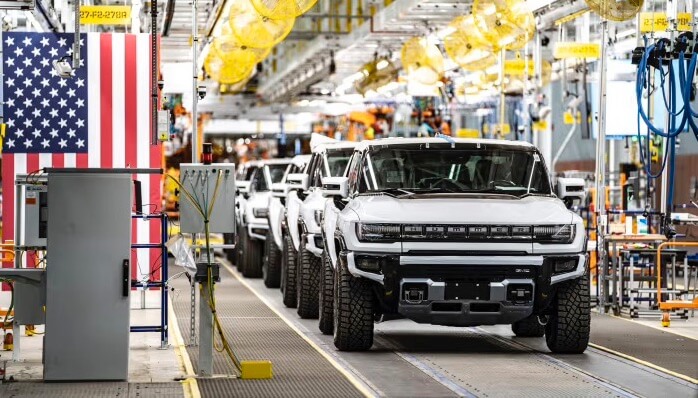The renewed ambition in Washington to rebuild America’s manufacturing base coincides with a significant moment of reckoning for the global economic order.

The Geneva trade talks between the United States and China provided a short-term reset to a spiraling tariff war, but they also exposed deeper structural contradictions that the United States can no longer avoid. One of the most central of these contradictions is captured in what economists have long referred to as the Triffin Dilemma.
Formulated by Belgian-American economist Robert Triffin in the 1960s, the dilemma explains why a country that issues the world’s reserve currency cannot sustain both domestic economic priorities and global financial obligations at the same time. If it wants to maintain international trust in its currency, it must run trade deficits and supply the world with dollar liquidity. But if it wants to rebuild its own industrial base, it needs to protect domestic production and run surpluses, thereby reducing the outflow of dollars. This contradiction is now being played out with full force in the current U.S. economic strategy.
The United States cannot restore large-scale mid-to-low-end manufacturing while maintaining the dollar’s dominant role in global finance. Manufacturing economies typically require a competitive exchange rate to boost exports. But the dollar, as the world’s primary reserve currency, must remain strong and stable to attract global savings, sustain U.S. Treasury purchases, and anchor the international financial system. This tension is structural, not cyclical. Any serious reindustrialization effort would place direct downward pressure on dollar dominance.
At the same time, America’s domestic labor structure does not support its reindustrialization dream. With an aging population and a shrinking blue-collar workforce, the United States lacks the demographic depth for a manufacturing revival on the scale it envisions. Rebuilding vocational capacity would take at least 15 to 20 years of deliberate investment in education and technical training. In the immediate term, any attempt to bring back mass production would require large numbers of low-cost workers. The political establishment is not ready to admit this, but the only available source for such labor is undocumented immigrants.
This is the inconvenient truth embedded in the rhetoric of bringing jobs back to America. The U.S. can build factories, but it cannot staff them without relying on the very population segments it seeks to restrict. According to estimates from the Migration Policy Institute, over 11 million undocumented immigrants already live in the United States, many working in informal sectors that overlap with supply chain logistics, food processing, and low-end manufacturing. Any industrial strategy that excludes them will be incomplete. Yet legalizing this labor force remains politically volatile, especially in an election cycle. This is where ideology collides with economic necessity.
The Geneva trade talks brought temporary relief. The suspension of 24 percent of the new tariffs and the removal of 91 percent of April’s retaliatory measures showed that both China and the United States understood the cost of continued escalation. However, these moves do not resolve the deeper conflict rooted in the global monetary system. If Washington insists on rebuilding manufacturing while using the dollar as a tool of geopolitical power, it will eventually find itself undermining both goals. As reindustrialization cuts into imports, countries will hold fewer dollars. As dollar demand weakens, the space for competing currencies will grow.
This is already happening. The dollar’s share of global reserves has steadily declined from 71 percent in 1999 to about 59 percent today. Central banks across Asia, Africa, and Latin America have begun increasing their exposure to the euro, gold, and the Chinese yuan. The establishment of China’s CIPS payment system, growing yuan-denominated trade agreements, and increased usage of local currencies in BRICS and ASEAN transactions all point to one trend: the diversification of global currency reliance. This does not mean the dollar will collapse. It means its privilege will erode, and with it, America’s ability to finance its deficits without consequences.
From China’s perspective, this shift presents a rare opportunity. The Geneva agreement was not only about tariffs. It was about timing. China has already demonstrated its ability to stabilize trade while expanding diplomatic and financial ties elsewhere. President Xi Jinping’s concurrent visit to Moscow during the Geneva talks underlined Beijing’s multidirectional foreign policy. It does not rely solely on Washington. It builds institutions across the Global South. The growing acceptance of the yuan in regional trade, coupled with China’s consistent engagement with African, Latin American, and Central Asian markets, reflects this broader strategy.
In managing the Triffin Dilemma, China has adopted a cautious but purposeful path. It is not calling for the end of the dollar system. It is building resilience around it. The yuan’s share of global reserves remains modest, but its influence is growing through non-financial channels—bilateral agreements, energy deals, infrastructure projects, and regional development financing. These mechanisms support a longer-term shift away from unilateral monetary hegemony toward a more balanced and representative financial order.
Dollar strength, while politically attractive, makes U.S. exports expensive and undermines the competitiveness of domestic production. Weakening the dollar to support exports would make global investors uneasy and reduce foreign demand for U.S. debt. Washington will not be able to resolve this tension by rhetoric alone. It will have to choose between being a financial empire or a manufacturing economy.
Author: Muhammad Asif Noor – Founder of Friends of BRI Forum, Senior Advisor to Pakistan Research Centre at Hebei Normal University in China, Co-Founder of the Alliance of China-Pakistan Research Centres, and Senior Fellow at the Centre for CPEC Studies at Kashi University in China.
(The opinions expressed in this article are solely those of the author and do not necessarily reflect the views of World Geostrategic Insights).







